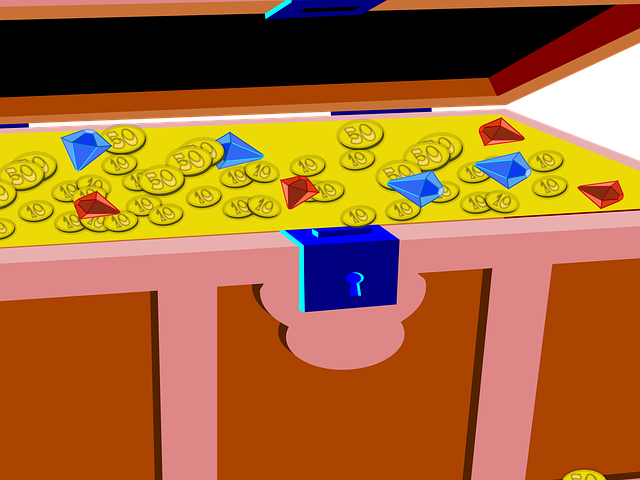Medical imaging for lung and chest conditions relies on diverse, powerful non-invasive techniques. X-ray imaging offers a basic yet crucial tool with low patient radiation exposure for initial evaluations. CT scans provide high-resolution cross-sectional images, aiding in detecting subtle abnormalities like lung nodules or pulmonary fibrosis. MRI uses magnetic fields and radio waves to visualize intricate structures without ionizing radiation. PET scans leverage radioactive tracers for early cancer detection, while Ultrasound uses high-frequency sound waves for real-time screening of conditions like pleural effusions. These advanced technologies enhance diagnostic accuracy and treatment planning in the field of medical imaging for lung and chest.
Medical imaging for lung and chest diagnosis plays a pivotal role in detecting and diagnosing various conditions. From rapid, accessible X-ray imaging to detailed Computed Tomography (CT) scans, each technique offers unique insights. Magnetic Resonance Imaging (MRI) uncovers complex structures with remarkable clarity, while Positron Emission Tomography (PET) and Ultrasound provide specialized information for targeted diagnoses. This comprehensive guide explores these essential medical imaging methods, shedding light on their applications and benefits in assessing lung and chest health.
X-Ray Imaging: A Basic Yet Powerful Tool
X-ray imaging, though basic in comparison to modern technologies, remains a powerful tool in the diagnostic arsenal for medical imaging of the lungs and chest. This non-invasive technique uses low-energy X-rays to create detailed images of internal body structures. When applied to the lungs and chest area, it can detect a wide range of conditions, from pneumonia and pulmonary edema to tumors and fractures.
X-ray imaging offers several advantages that make it a go-to choice for initial evaluations. It’s readily available, fast, and relatively inexpensive. Radiologists can easily interpret the resulting images, providing critical insights into lung and chest health. Furthermore, X-rays expose patients to minimal radiation, making them a safe option for frequent or emergency diagnostic use in medical imaging for lung and chest conditions.
Computed Tomography (CT) Scans for Detailed Insights
Computed Tomography (CT) scans are a powerful tool in the realm of medical imaging for lung and chest diagnosis, offering detailed insights that aid healthcare professionals in their assessments. This non-invasive technique uses X-rays to create cross-sectional images of the body, providing high-resolution visuals of internal structures, including the lungs and surrounding tissues. CT scans can detect subtle abnormalities that may be missed by other imaging methods, such as small lung nodules or early signs of pulmonary fibrosis.
The advantage of CT scans lies in their ability to produce detailed anatomic information, enabling doctors to identify various conditions like pneumonia, tuberculosis, lung cancer, or cardiovascular diseases affecting the chest region. With modern technology, these scans can be quickly performed, allowing for prompt diagnosis and treatment planning. Additionally, they serve as valuable tools for monitoring disease progression and evaluating the effectiveness of treatment interventions in medical cases related to the lungs and chest.
Magnetic Resonance Imaging (MRI): Uncovering Complex Structures
Magnetic Resonance Imaging (MRI) is a powerful tool in the field of medical imaging for lung and chest diagnosis, offering detailed insights into complex structures within the body. Unlike X-rays or CT scans, MRI does not use ionizing radiation, making it a safer alternative for repeated examinations. It utilizes strong magnetic fields and radio waves to generate detailed cross-sectional images of internal body structures. For lung and chest conditions, MRI provides high-resolution pictures of the lungs, heart, blood vessels, and surrounding tissues, enabling doctors to detect abnormalities such as tumors, infections, or inflammation.
This non-invasive technique is particularly valuable for evaluating intricate anatomical relationships in the chest region. It can clearly visualize the delicate structures of the lungs, including the bronchioles, alveoli, and pleural space, helping radiologists identify subtle changes that may indicate various pulmonary diseases. Moreover, MRI’s ability to produce multiple planar images from a single scan allows for comprehensive evaluation, ensuring a thorough understanding of chest pathologies.
Other Advanced Techniques: Positron Emission Tomography (PET) and Ultrasound
In the realm of medical imaging for lung and chest diagnosis, Positron Emission Tomography (PET) and Ultrasound stand out as advanced techniques. PET scans utilize radioactive tracers to visualize metabolic processes within the body, offering insights into diseases like cancer that may not be evident on standard X-rays or CT scans. This non-invasive procedure generates detailed images of organ function, making it invaluable for assessing lung conditions and detecting metastases in chest tumors.
Ultrasound, on the other hand, employs high-frequency sound waves to create real-time images of internal body structures. It is particularly effective in evaluating pleural effusions, pneumothorax, and other chest abnormalities. The portability and real-time capabilities of ultrasound make it a versatile tool for both diagnostic and therapeutic interventions, often used as an initial screening method before more complex procedures like biopsy or surgical intervention in the lung and chest regions.
Medical imaging for lung and chest diagnosis has advanced significantly, offering a range of powerful tools from basic X-rays to complex MRI and PET scans. Each technique provides unique insights, enabling healthcare professionals to make accurate diagnoses and develop effective treatment plans. By leveraging these advanced technologies, medical practitioners can ensure better patient outcomes in the management of pulmonary and thoracic conditions.
